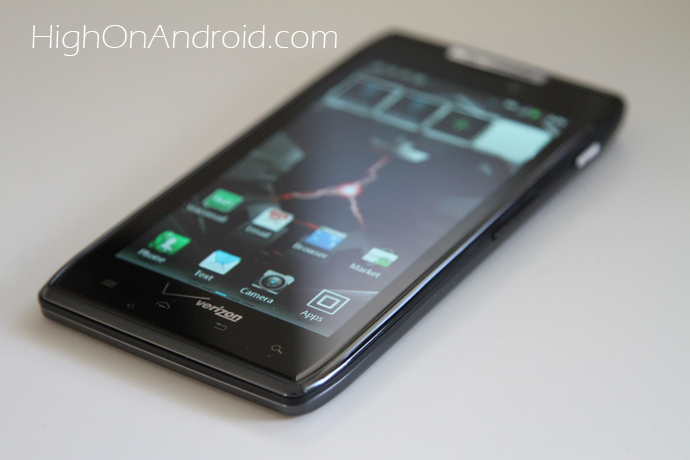
Do you want the world’s thinnest smartphone with 4G LTE?
If you answered yes, you might want to check out the Droid Razr review.
The Droid Razr is the world’s thinnest smartphone with thickness at just 7.1mm (compared to 8.49mm Galaxy S2). It also packs TI OMAP 4460 1.2Ghz dual-core processor, the same one found on Galaxy Nexus. On top of all, the world’s thinnest smartphone supports goodies like 4G LTE (which is currently the fastest, most reliable 4G in the U.S.), micro-HDMI output, and full 1080P video recording with image stabilization.
Pros
- World’s Thinnest Smartphone – This phone is really, really, really thin.
- Verizon’s 4G LTE is fastest and most reliable 4G service in the U.S. period.
- Latest TI OMAP 1.2Ghz dual-core processor
- Full 1080P video with image stabilization
Cons
- Display is a bit grainy
- No back cover, meaning you can’t replace the battery.

The Droid Razr isn’t 7.1mm thick all the way but over 90% of it is with a hump on the top of the phone.

(View from the left side of Droid Razr – There’s a pull-out tab for 4G LTE SIM card and microSD card.)
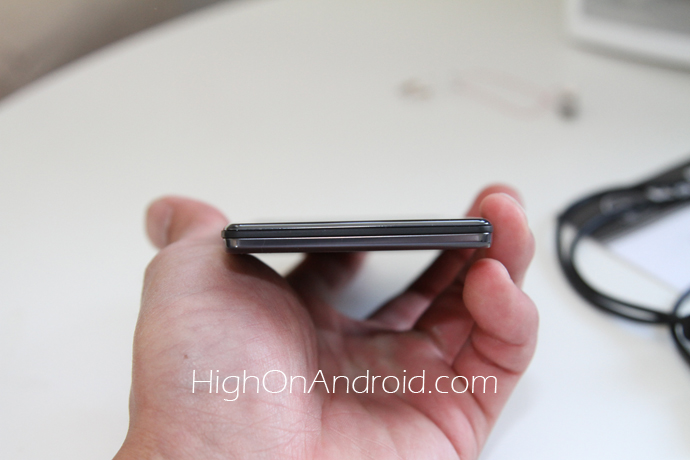
(View from bottom of Droid Razr – The bottom of the phone is super-clean.)

(View from right side of Droid Razr – The right side of the phone features a metallic power/sleep button and black, plastic volume buttons.)
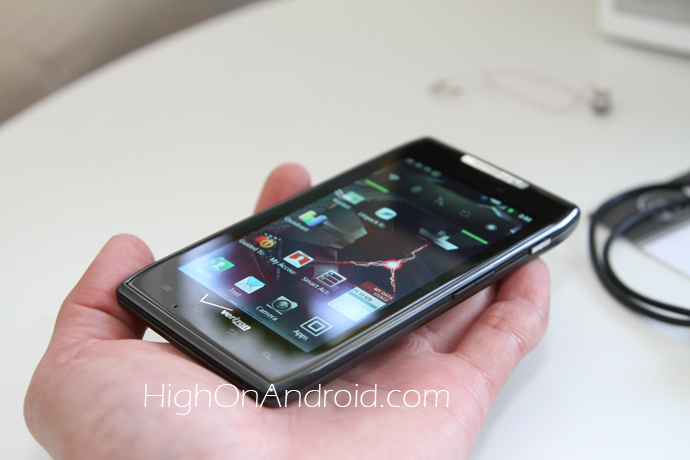
Droid Razr is Thin and Light
The Droid Razr feel very light in your hands. At 125 grams, it’s just a tad heavier than Samsung Galaxy S2, which weights 117 grams. When I first got my hands on Samsung’s Galaxy S2 earlier this year, I was wowed by how thin the phone was. Well, let me tell you right now that the Droid Razr is even better and certainly deserves such a conforming name, thin as a “Razr”.
If you never felt a thin smartphone and actually put it in your pocket, I highly suggest you to try that next time you are at a smartphone shop. (and if you are an iPhone user, you have NO idea what you are missing out on)
Overall, having a thinner/lighter phone means your pockets will feel lighter and won’t feel like you are carrying a brick. That I feel now with my Evo 3D, can’t believe technology goes so fast.
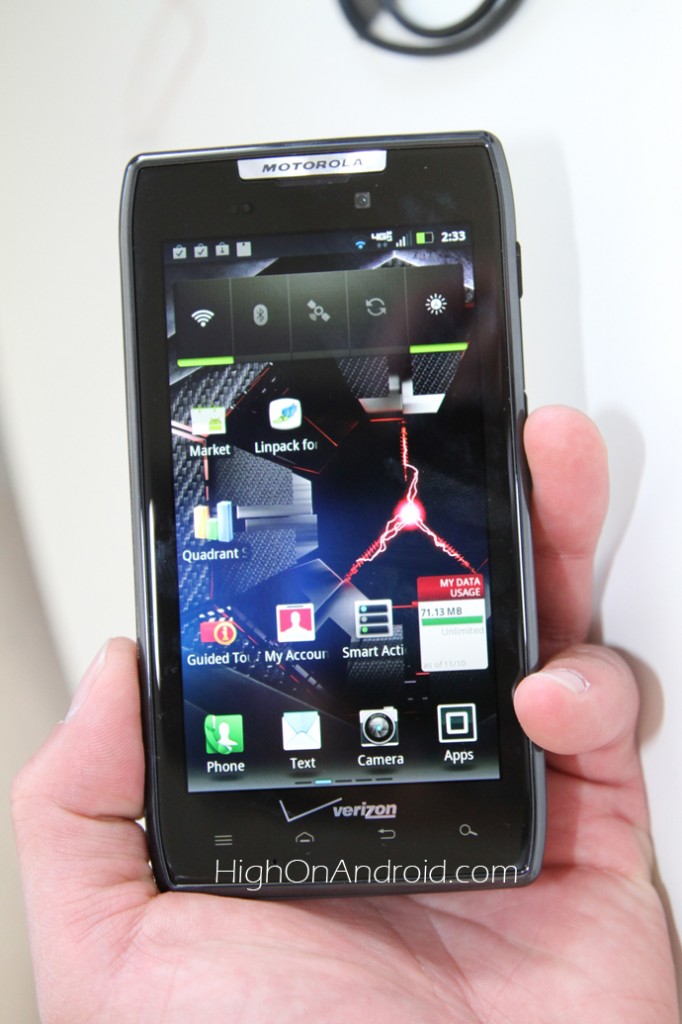
Verizon’s 4G LTE on Droid Razr
If you have a grandfathered Verizon number, you can switch to the Droid Razr (like I did) to get unlimited 4G LTE service. I’ve use and test all 4G services including Sprint’s WiMax 4G, T-Mobile and AT&T’s fake HSPA+ 4G, and Verizon’s 4G LTE but the outcome is always the same, Verizon’s 4G LTE averages near 10-25Mbps download with 2-10Mbps upload speeds while everyone else lags behind. Besides fast service, I’ve found that Verizon’s 4G LTE gets more bars than other carriers.
And no, I have no preference for carriers, I just use and promote whatever is the fastest based on real-world testing. You will get an honest answer out of me but don’t go tellin’ me your Sprint/AT&T/T-Mobile/Verizon rep telling you otherwise, they will always tell you theirs is better.
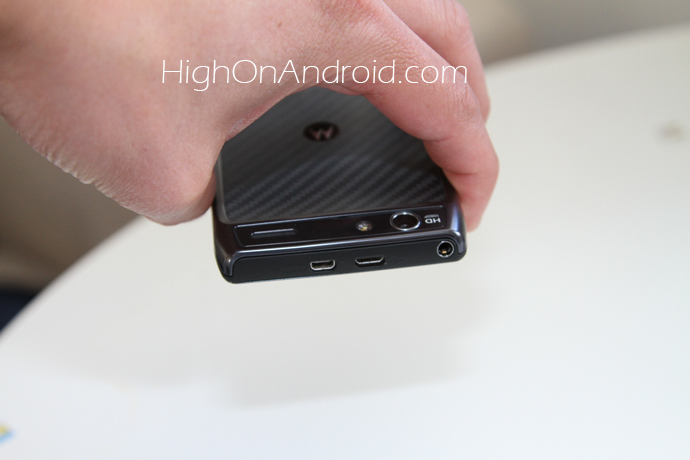
Top of Droid Razr feature the micro HDMI port for WebTop and HDMI mirroring, micro USB port, and a headphone jack. I like how the micro USB port is on top, it makes it easier to use the phone while charging.
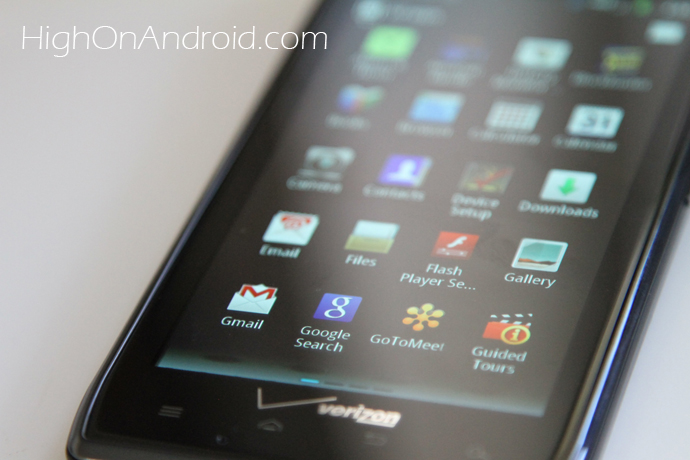
Droid Razr Display
The Droid Razr features a qHD Super AMOLED 4.3-inch screen with resolution of 960×540. Viewing angles are great on this display, the only complaint I have is that the pixels can become a bit grainy on certain multi-touch gestures.
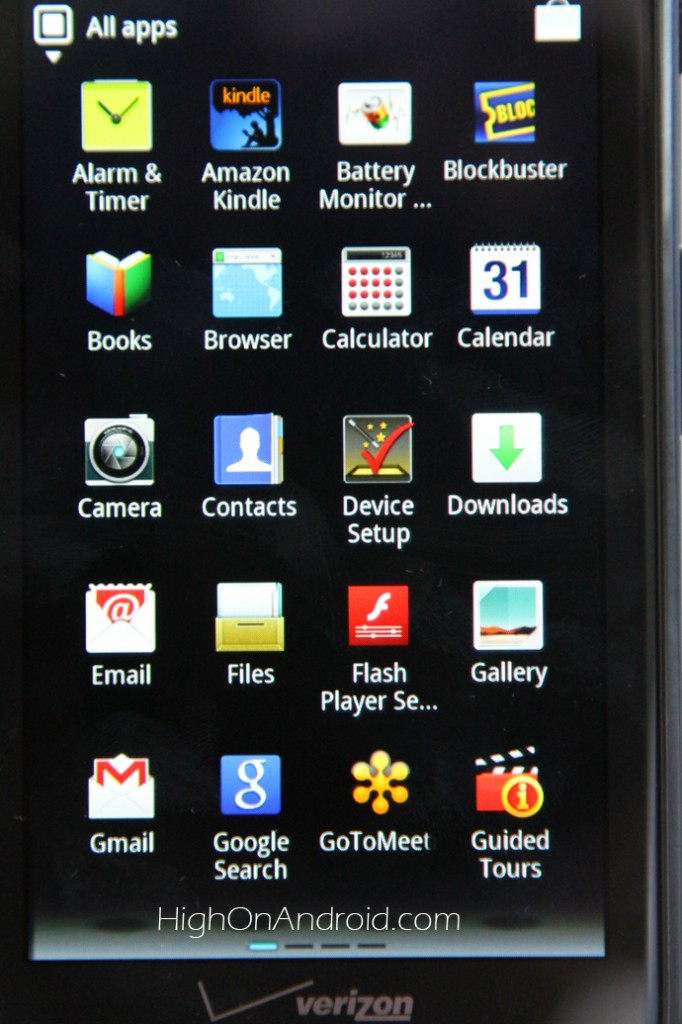
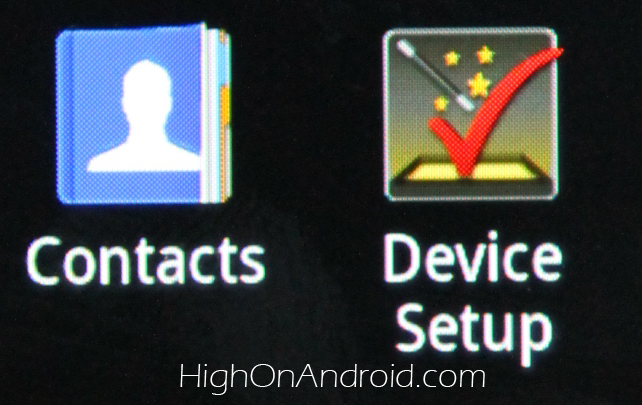
Above photo shows close-up of the qHD display on the Droid Razr. As you can see, there’s a bit of graininess. That’s my only complain about the phone though, otherwise it’s a lean, iPhone-killing machine.
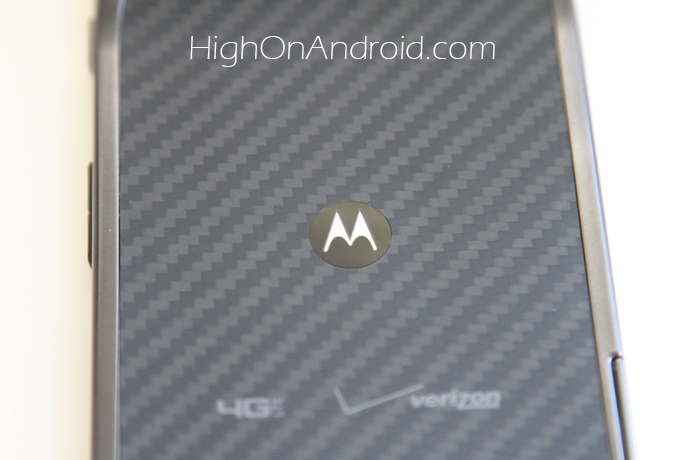
The back of the Droid Razr is simply well thought out and beautiful, nothing bad I can say about this.
Droid Razr full 1080P Camera with Image Stabilization

The back-camera of Droid Razr features a full 1080P video camcorder at 30fps, 8-megapixel still-camera, and an LED flash. You can also see the speaker next to the Razr, which are quite loud when streaming music apps like Google Music and Pandora.
The Droid Razr’s camera/camcorder features image stabilization, one of the first on Android smartphone with 1080P capabilities. It does a great job of minimizing hand-shakes while taking photos and videos. This is one feature I’ve seen upgraded over its predecessor Droid Bionic, which I have also been extensively using on daily basis.
This is one difference that makes a bit better over the Samsung Galaxy S2.
Also, the Droid Razr features “lag-free” shutter, here’s a video demo of that:
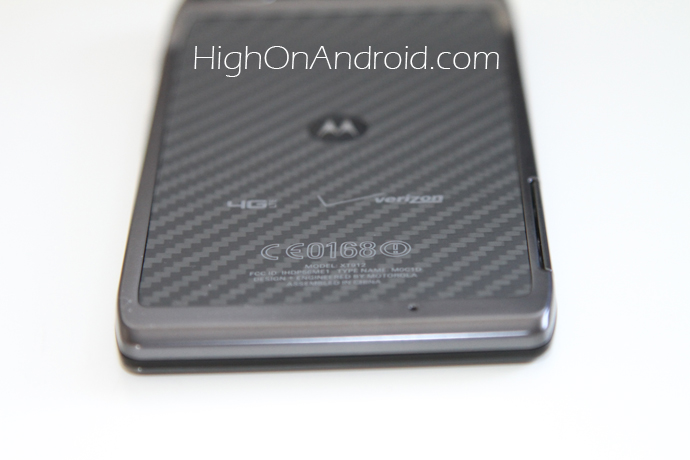
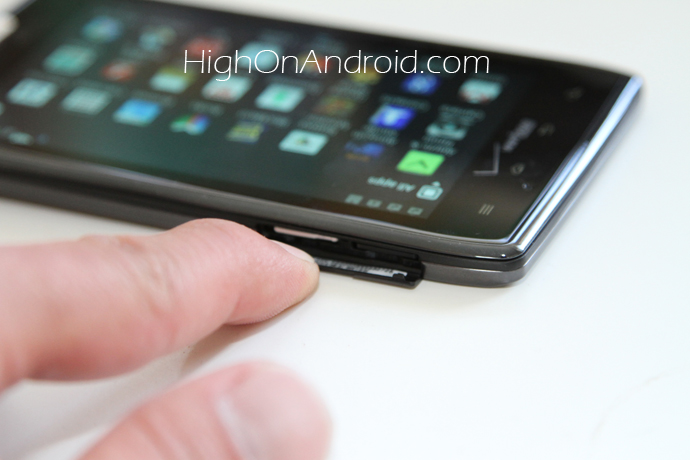
(The pull-out tab on the Droid Razr.)
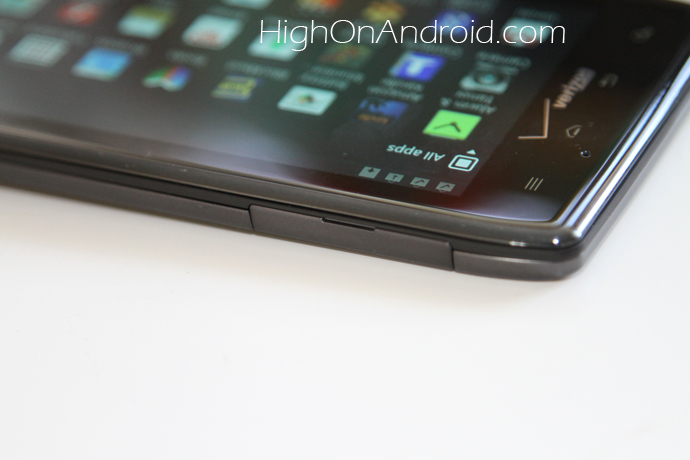
Droid Razr is World’s Thinnest Phone at 7.1mm thickness!
Really, the Droid Razr’s main feature over any other smartphone on the market right now is its thiness.
Here’s some side view shots that show you how thin the Droid Razr is.
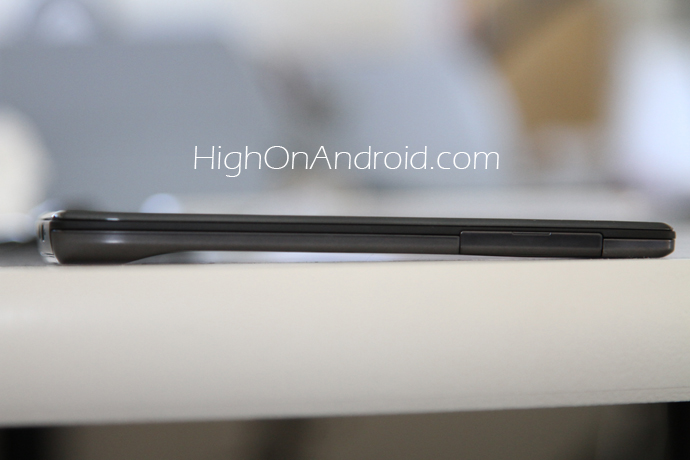
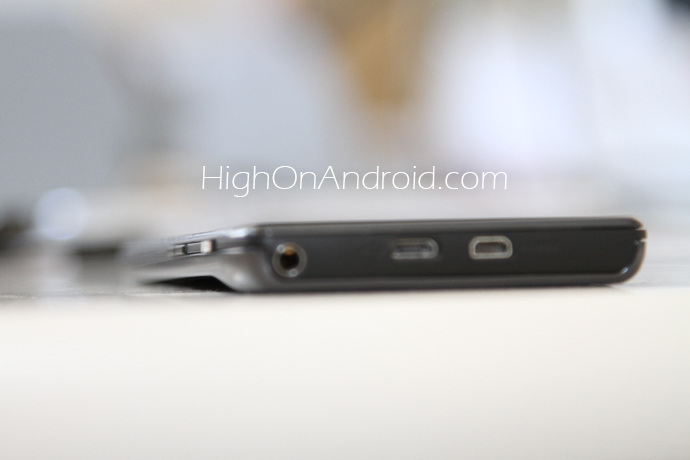
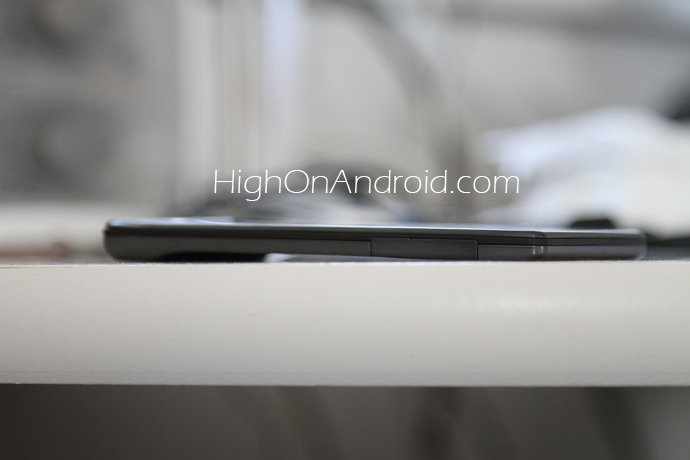
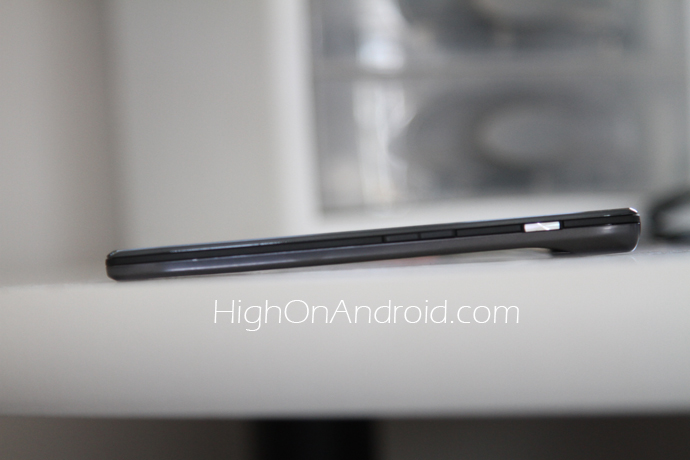

Compared to a Samsung Galaxy S2 (AT&T/international version), the Droid Razr is about the same width but a bit taller.
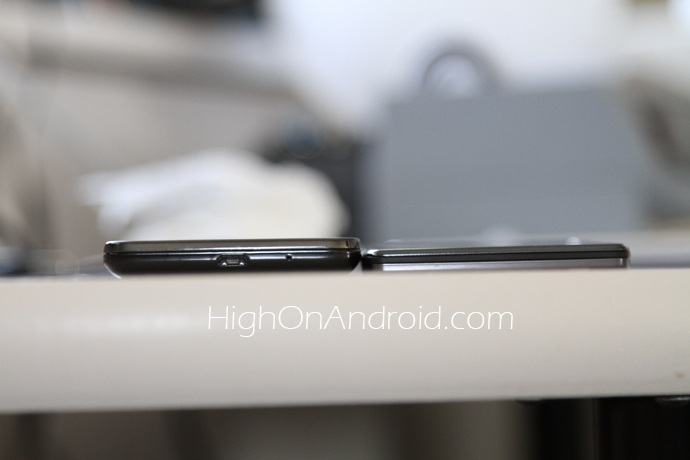
Above shows bottom of Galaxy S2 (on the left) and Droid Razr. You can see a clear difference on how thin the new Droid Razr is than the Galaxy S2.
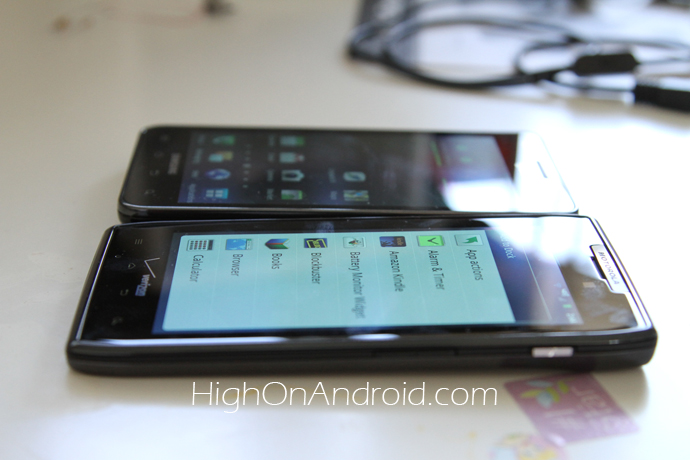
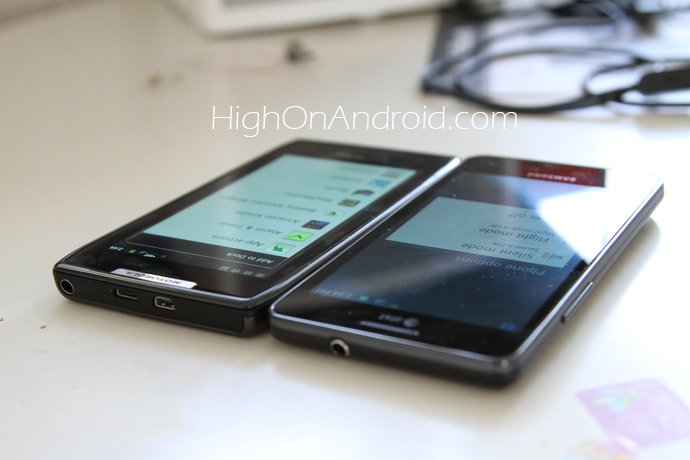
Although the most of the Droid Razr is thinner than Galaxy S2, the Droid Razr is a bit thicker where the “hump” lies than the Galaxy S2. But overall, the Droid Razr is much thinner, outright world champion.
In the end, it really boils down to your needs. Do you want the world’s thinnest smartphone with the world’s fastest 4G LTE service?
Galaxy Nexus is coming out soon, which will have similar specs as the Droid Razr but I believe it all depends on the user experience. For some, Droid Razr might be the answer, for others Galaxy Nexus could be the best possible choice.
Before you make that purchase though, don’t forget to try the phone out yourself at the store.

More close-up photos of Droid Razr:
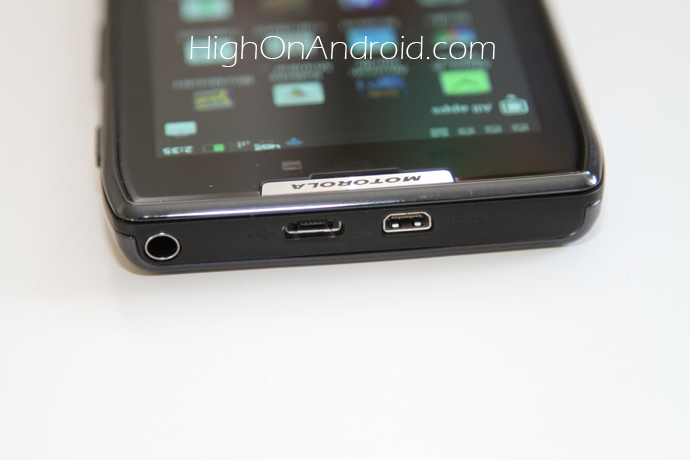

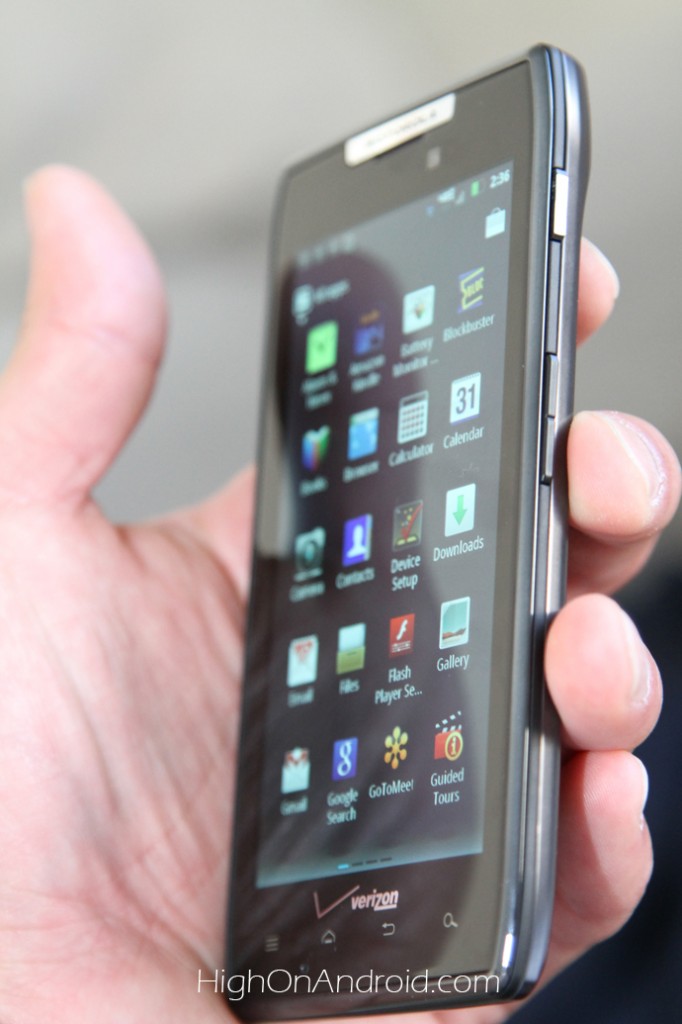

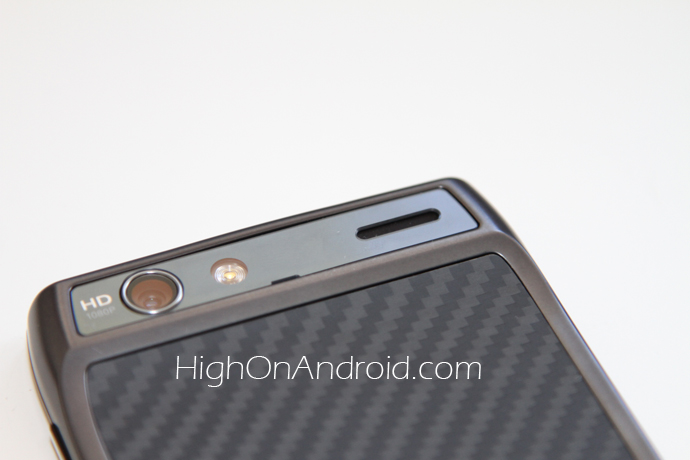
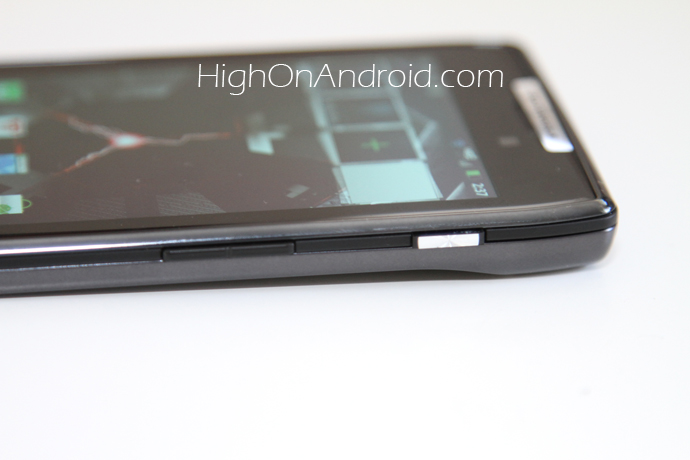
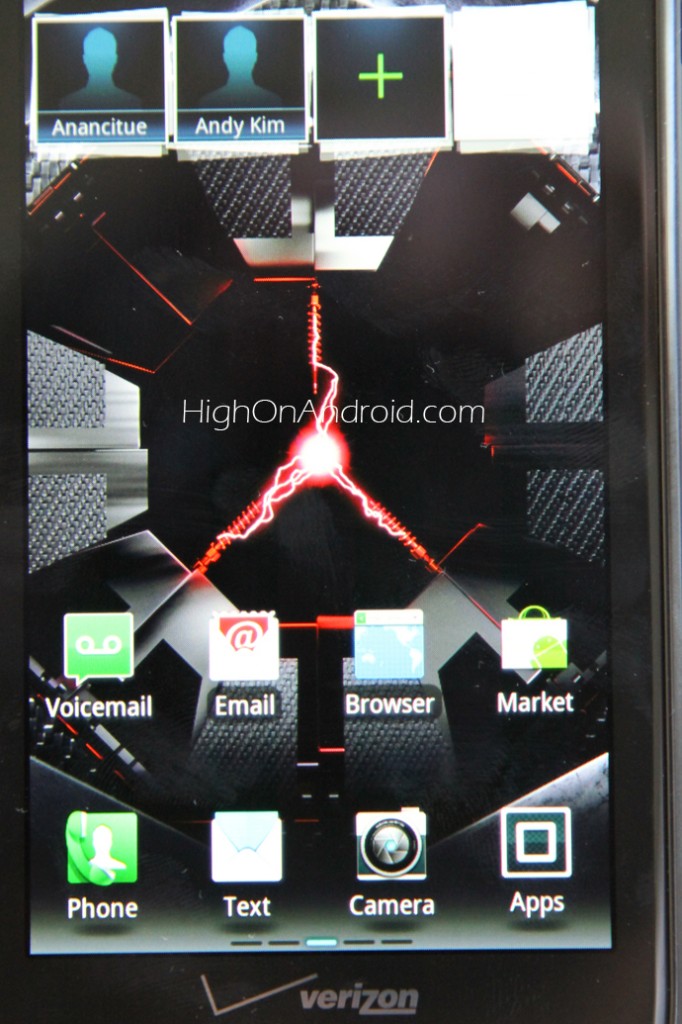

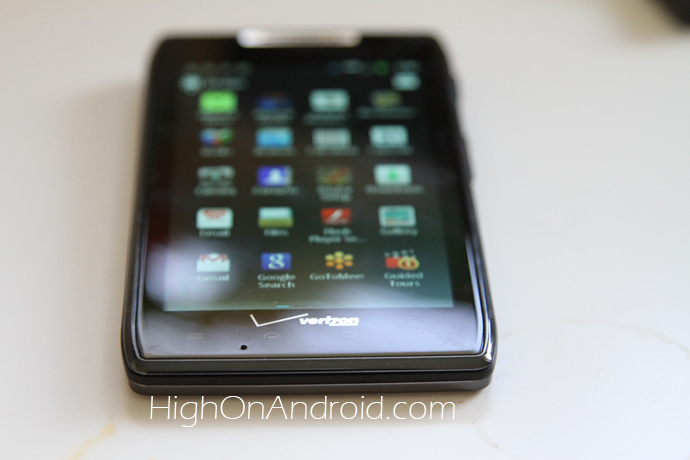
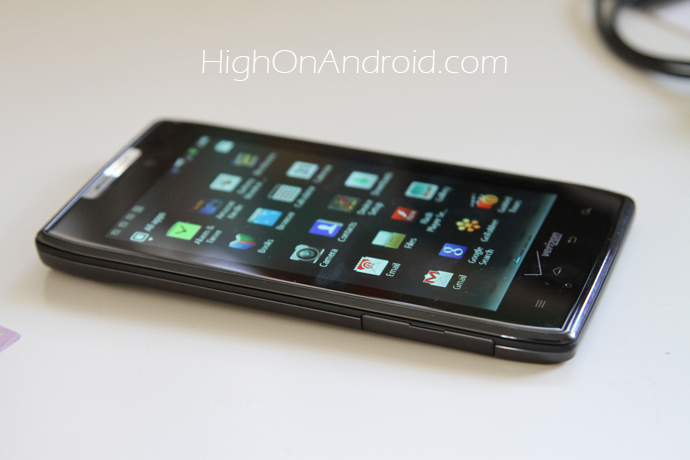
Also see:
Have a question?
Please post all your questions at the new Android Rehab Center at HighOnAndroid Forum, thank you for understanding!Join the HighOnAndroid VIP Fans List for free help from Max and discounts on Android accessories.


